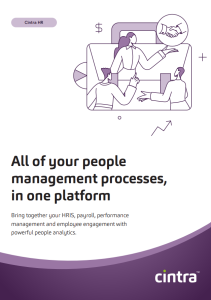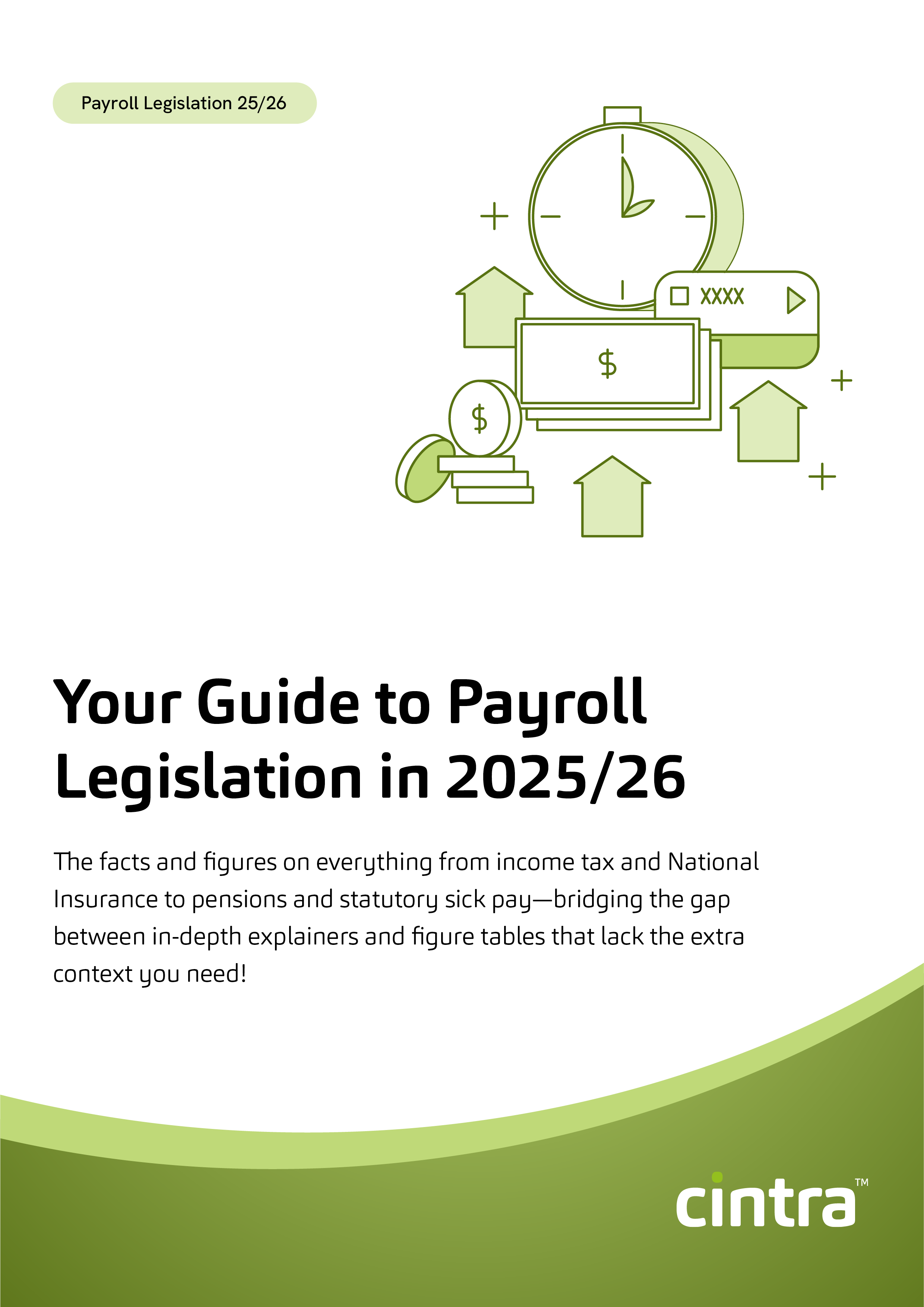There’s no doubt that your biggest assets are the ones that walk out of the building every night. It’s not your product, it’s your people. Without them, all you have are some great ideas and empty desks. That’s why it’s vital to improve employee engagement.
So, keeping your employees happy, engaged and excited to be part of your team is the key to a thriving organisation. But true employee engagement isn’t as simple as making sure everyone is working and getting paid for their work. It takes a fine balance and a little bit of magic. But when it works, it takes every part of your organisation up to the next level.
What is employee engagement?
As a HR professional you get the importance of employee engagement. Because ‘people’ is what you do, and you know how much people matter.
But what does employee engagement actually mean? One Gallup study defined an engaged employee as someone who is “highly involved in, and enthusiastic about, their work and workplace”.
That makes sense, but it’s pretty hard to measure. You can walk through your building and see people who are working, but how can you tell if they’re feeling that deeper sense of meaning and engagement? It’s unlikely that everyone’ll be whistling as they work with big grins on their faces…
It’s even harder to measure engagement when your employees aren’t physically in an office. Video calls were great when we had to stay home, but the new hybrid working model makes it even more difficult to measure employee engagement. In fact, that same Gallup study suggests that since the pandemic, employee engagement has fallen and only 33% of employees are actually thriving.
Why should you improve employee engagement?
This feels like a bit of a no-brainer. Engaged employees are happy employees. And happy, engaged employees are productive employees. In fact, 92% of leaders report a performance boost when employees are happy and engaged.
Employee retention
When your teams feel like they’re part of something they care about and work feels like more than ‘just a job’, they stay. And we don’t have to tell you about the benefits of employee retention. The less on- and off- boarding you’re doing, the more you can crack on and deal with the rest of your to-do list!
Employee productivity
You’ve felt this… when you’re in the right job, and you feel like you’re contributing to something truly incredible, you do a better job, and your productivity goes up. Your work creates results that really matter. And you’re more engaged. It’s an employee engagement – productivity loop. And that’s a massive win-win.
Absenteeism falls
You’ve probably felt both sides of the coin on this one too. When you’re happy at work, you’re happier to be there. Not only that, but when work feels meaningful, your mental health and well-being increase, so there’s less reason to need a day off. In fact, organisations where employee engagement is high experience 41% lower absenteeism. Because when work is positive and fulfilling, when it feels satisfying, mental health outcomes inevitably improve. As a HR professional you’ll feel the sharp end of the absenteeism, so anything you can do to reduce is going to make your work happier and more meaningful too!
Once you add all of that up, employee engagement suddenly looks like something you need to put front and centre. It’s obvious that engaged employees are going to make all the difference to your business. But how do we improve employee engagement and move to a culture of an engaged, happy workforce?
Embedding a culture of employee engagement
Now comes the exciting part. Although it’ll take some thought and time to create the employee engagement levels you’re looking for, it doesn’t need to be a daunting task. In fact, you might find it quite… engaging!
It’s all about focusing on changes that will create a positive, inclusive culture where people truly matter. We’re talking about a culture which puts employee experience at the centre. So, here are the areas of culture you should focus on to improve employee engagement…
a. A culture of communicating deliberately and regularly
Who doesn’t love a chat?! We like community and we like to communicate. As organisations grow, communication can become difficult, especially in remote working environments.
Miscommunication (or, even worse, lack of communication) leads to people feeling isolated, negative and cynical. But you can build trust through transparency. Open up deliberate and regular channels of communication, so that everyone feels part of the same team.
It doesn’t take much to get this right. Regular 1:1s, pulses and or even employee breakfasts could be good places to start.
b. A culture of recognition
Remember the buzz of getting a medal at your primary school sports day? Nothing much changes as we grow up – it still feels great when someone recognises your wins. Employees who feel seen and rewarded (as well as heard!) feel that buzz. And positivity and engagement surge.
By bringing in incentive-based schemes, awards programmes or even just a system for employees to publicly thank each other, your staff will start to feel a sense of affirmation. Those employees who thrive on recognition will feel a ‘happiness bump’, and those who thrive on competition will feel inspired to reach for more.
c. A culture of wellbeing
Burnout is a very real thing – you’ve probably seen it first-hand. And of course, you can’t be burnt out and engaged in your job. When you start investing in employee wellbeing, you’re already investing in engagement.
Again, this is an easy thing to get right, and here are some things you could do to get the ball rolling:
- Start with a wellbeing policy.
- Introduce an employee assistance programme
- Train up some mental health first aiders
- Promote healthy living through great food in your canteen and exercise programmes or gym membership for your teams.
- Most importantly, keep checking in. It all comes back to those clear channels of communication.
d. A diverse culture
You’ve worked hard to make sure that your teams are a diverse bunch, with every hire made for all the right reasons. But it isn’t enough to employ for diversity. Now you need to celebrate it.
- Get your policies right – and think about inclusive language across all policies, and have a policy specifically for equity, diversity, and inclusion.
- Make sure that every employee knows they have the same chance of success as anyone else.
- Create a physical environment that enables everyone.
- Diversity training to help all colleagues to make sure they know how to get it right.
- Mentorship can be an excellent way to promote inclusion across your organisation
That all adds up to a great start, so keep listening and being ready to adapt to create a truly inclusive space for everyone.
e. A culture of feedback
We all want to be heard. There’s nothing new there… And it’s no surprise that one of the big enablers of employee engagement is employee voice. Employers need to seek out, listen to and act on the feedback of their employees.
It’s simple to listen – there are plenty of methods for getting feedback. The biggest step? Acting on it. Keep people informed about how you’re listening, and how you’ll move forwards with their suggestions.
f. A culture of values
Alignment is everything. An employee who knows the mission of the organisation and their place in achieving the goals is more likely to be engaged. A shared, aligned culture makes for a consistent, open place to work, and that will drive engagement.
Challenge your own organisation’s mission, values and culture. Do the senior team know it and own it? Do the policies match with that vision? If not, you have a little work ahead of you to make sure that everything is in the right place. But this is exciting work, that will mean huge gains across the board.
g. A culture of goals
People like:
- small steps building to big pictures and …
- mini-rewards for each step and…
- proper rewards when they hit the big goal!
So set some tangible goals, with tangible rewards attached to them to see your employees really thrive.
h. A culture of purpose driven leadership, not micromanagement
Some leaders fall into patterns of micromanagement. And that’s understandable when the stakes are high. But we’ve all been micromanaged, so we all know how it feels! It’s a massive stress-trigger.
If you see it taking place, it’s time to ask leaders to step back, help them to identify what and where they can delegate, and ask them to help their own team step up.
i. A culture of opportunity
We all want to know that we’ve got options. And for an employee to be engaged, they need to be able to see what might be up the road. Using career planning tools means that your employees know that you’re invested in them for the long haul. Meaning they don’t need to look anywhere else. Bingo.
j. A culture of collaboration
No person is an island… We weren’t meant to trudge along in isolation. Innovation comes from great collaboration and so does a sense of belonging and that buzz we all need at work. If you can provide opportunities for collaborative working practices, do it. You’ll reap rewards in no time.
k. A culture of efficiency
Nothing says stress-fest like constantly battling poor processes and red-tape! Release your employees by taking a step back and looking at how you can knock some of that on the head. Cut away the processes that don’t work, look at how you can make life simpler. No one will hold that against you!
l. A culture of values-driven behaviour
Once you’ve defined your values, they’re going to become the bedrock of everything you do. Hire in line with those values. Set the tone from day one with a values driven-onboarding process. Remember that culture of recognition we talked about? Frame your rewards around your company values. They become the beating heart of your organisation, and everyone feels like they’re part of something special.
m. A culture of flexibility
In this post-pandemic world, we know that there is no one-size-fits-all way of working. For some, the idea of being back in the office 5 days a week feels like a nightmare. For others, just the thought of a full week at home is enough to give them a full-time case of the Sunday Scaries! The good news? You’re all set to offer the flexibility that everyone needs so they can find their sweet spot. And those open communication channels are going to help you define where that sweet spot lives.
Measuring employee engagement
You know what you’ve gotta do…. And it’s exciting. There are ways you can improve your employee’s experience of working life, and that’s going to lead to huge improvements in employee engagement. Let’s face it, as a HR team, that’s what you’re all about.
But how do you know if it’s working? Well, in your new culture of communication, you’ve got that covered. Most employees are hungry to feed-back on what’s working (and more often!) what isn’t. Regular check-ins and 1:1s are going to tell you a lot. But for those who aren’t keen to share, you need to provide them with safe spaces. Monthly pulses are a great place to start – you can use them to gather anonymous, targeted feedback. And that will give you an insight into where to start and how to keep moving forwards.
Introducing CintraHR
If you would say that ‘excited’ isn’t quite the word, and ‘daunted’ sums it up, then relax, we’re here to help. We understand that sometimes HR can feel like a slope you just never quite seem to summit. And that’s why we have invested over £3 million in the last few years to find solutions that will get you to the top of that summit, and the top of your game.
That’s where HR software comes in. CintraHR can make this employee engagement puzzle a cinch.
- Customisable employee surveys make those pulses easy to use and really meaningful.
- Real-time, continuous feedback which means that you’re always listening, and that the channels of communication are there for everyone, all the time.
- Sentiment, happiness and eNPS analytics at your fingertips give you insights into whether your culture is as robust as you think it is, and how far your employee engagement strategy is working.
- Performance management and training features ensure that all employees map out their future with your business. That’s going to increase happiness, and retention, right there.
We know it’s a lot. But we can help. Why not book a demo to see exactly how Cintra can increase employee engagement for you? We’re pretty sure it’ll be a game changer!

Find out more about the features and functionality designed to transform your people processes.


